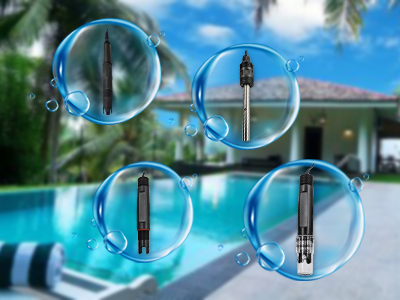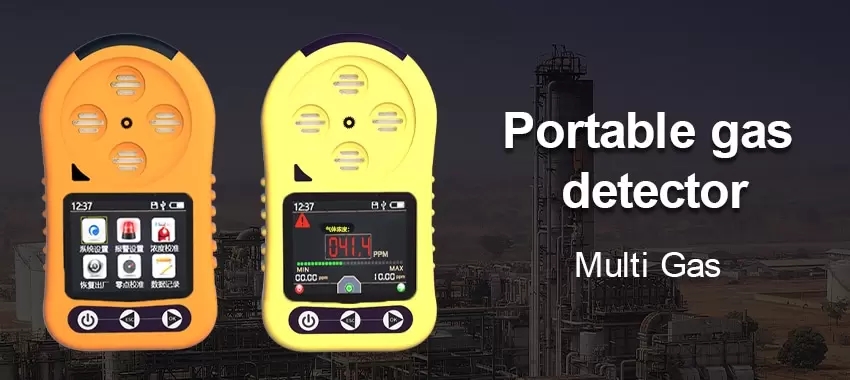Temperature sensor
A temperature sensor measures the heat in a heat source. They can detect temperature changes and convert those changes into data. Machinery used in manufacturing usually requires ambient and equipment temperatures to be at a certain level. Similarly, in agriculture, soil temperature is a key factor in crop growth.
Temperature sensors can be roughly divided into contact type and non-contact type from the perspective of use. The former is the direct contact between the temperature sensor and the measured object, and the temperature change of the measured object is sensed through the temperature sensing element. In the latter, the temperature sensor keeps a certain distance from the object to be measured, detects the intensity of infrared light emitted by the object to be measured, and calculates the temperature.
Temperature sensors are mainly used in fields closely related to temperature, such as intelligent insulation and ambient temperature detection.
Humidity sensor
Humidity sensors measure the amount of water vapor in air or other gases. Humidity sensors are commonly found in heating, ventilation and air conditioning (HVAC) systems in industrial and residential areas. They can be found in many other areas, including hospitals and weather stations, for reporting and forecasting the weather.
Pressure transducer transducer
Pressure sensor is a device that can sense pressure signals and convert them into usable electrical signals according to a certain rule.
Pressure sensors are usually composed of pressure sensing elements and signal processing units. According to different test pressure types, pressure sensors can be divided into gauge pressure sensors, differential pressure sensors and absolute pressure sensors.
Pressure sensors sense changes in gas and liquid. When pressure changes, sensors detect these changes and communicate them to the connected system. Common use cases include leak testing, which can be the result of decay. Pressure sensors are also useful in the manufacture of water systems because they can easily detect fluctuations or drops in pressure.
Proximity sensor
Proximity sensor is a device that can sense the proximity of an object. It is a general term for sensors to detect objects without touching them. The movement information and presence information of the detected objects are converted into electrical signals.
Proximity sensor is used for non-contact detection of objects near the sensor. These types of sensors typically emit electromagnetic fields or beams of radiation, such as infrared. There are some interesting use cases for proximity sensors. In retail, proximity sensors can detect movement between a customer and the product he or she is interested in. Users can be notified of any discounts or specials on products near the sensor. Proximity sensors are also used in parking lots at shopping malls, stadiums and airports to indicate parking Spaces. They can also be used on assembly lines in chemical, food, and many other types of industries.

Liquid level sensor
A sensor used to determine the level or amount of a liquid, liquid, or other substance flowing in an open or closed system is called a level sensor.
Level sensors are used to detect the level of substances including liquids, powders and granular materials. Level sensors are used in many industries, such as petroleum manufacturing, water treatment, and beverage and food manufacturing. Waste management systems provide a common use case, as a level sensor can detect the level of waste in a trash can or bin.
Water quality sensor
Water quality sensor is mainly used for water quality detection and ion monitoring in water distribution system.
Water is everywhere in production and life. These sensors play an important role in monitoring water quality for different uses. They are used in a variety of industries.
Common water quality sensors are as follows:
Residual chlorine sensor
Dissolved oxygen sensor
Electrical conductivity sensor
PH sensor
Oxygen reduction potential sensor
Turbidity sensor

Gyroscope sensor
A gyroscope sensor measures angular velocity, which is usually defined as a measure of velocity and rotation about an axis. Use cases include automobiles, such as automotive navigation and electronic stability control (anti-skid) systems. Other use cases include motion sensing and camera shake detection systems for video games.
Gas sensing unit
These types of sensors monitor and detect changes in air quality, including the presence of toxic, combustible or harmful gases. Industries that use gas sensors include mining, oil and gas, and chemical research and manufacturing. A common consumer use case is the familiar carbon dioxide detector used in many homes.
Infrared sensor
These types of sensors sense features of the surrounding environment by emitting or detecting infrared radiation. They can also measure the amount of heat an object emits. Infrared sensors are used in various iot projects, including healthcare, as they simplify the monitoring of blood flow and blood pressure. The TV uses infrared sensors to interpret the signals sent by the remote control. Another interesting application is for art historians to use infrared sensors to look at hidden layers in paintings to help determine whether an artwork is original or fake, or whether it has been altered through the restoration process.

Optical sensor
Optical sensor convert light into electrical signals. Optical sensors have many applications and use cases. In the automotive industry, vehicles use optical sensors to identify signs, obstacles, and other things drivers notice when driving or parking. Optical sensors play an important role in the development of driverless cars. Optical sensors are very common in smartphones. For example, ambient light sensors can extend battery life. Optical sensors are also used in biomedical fields, including breath analysis and heart rate monitors.
Smoke sensor
The smoke sensor is used to detect the presence and concentration of smoke in the environment, for example, in the case of a fire. When the smoke probe encounters smoke or some specific gas, the internal resistance of the smoke probe changes and generates a simulated value to control it. The smoke sensor uses the principle that the resistance change of the smoke sensing element is affected by the concentration of smoke (mainly combustible particulate matter), and sends the corresponding smoke concentration simulation signal to the host.
Smoke sensor is another name for smoke alarm. Because it can detect the smoke produced by fire, and easy to install, so it is widely used in shopping malls, hotels, stores, warehouses, computer rooms, residential and other places of fire safety detection.